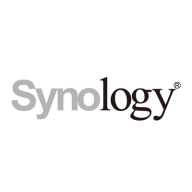

BackupAssist and Synology DSM compete in the backup and data management software category. Synology DSM seems to have the upper hand due to its rich feature set and perceived value.
Features: BackupAssist offers robust backup options, easy setup, and reliability in core backup functions. Synology DSM includes extensive features such as file synchronization, collaboration tools, and enhanced security measures.
Room for Improvement: BackupAssist users often request a more modern interface, faster performance, and better integration with third-party services. Synology DSM users suggest more intuitive navigation, improved performance, and better integration with third-party services.
Ease of Deployment and Customer Service: BackupAssist is noted for its straightforward deployment and strong customer support. Synology DSM offers extensive documentation and community support but may require a more complex setup.
Pricing and ROI: BackupAssist is recognized for its cost-effectiveness and clear ROI, appealing to smaller businesses. Synology DSM is more expensive but justifies its price with advanced features and versatility, making it a valuable investment for wider functionalities.
| Product | Market Share (%) |
|---|---|
| Synology DSM | 1.7% |
| BackupAssist | 0.4% |
| Other | 97.9% |

| Company Size | Count |
|---|---|
| Small Business | 8 |
| Midsize Enterprise | 4 |
| Large Enterprise | 1 |
BackupAssist is a comprehensive backup and recovery software designed for small and medium-sized businesses. It offers a wide range of features to ensure data protection and minimize downtime in case of system failures or disasters. With BackupAssist, users can easily create and manage backups for their critical data, applications, and systems.
One of the key features of BackupAssist is its support for multiple backup types, including full, incremental, and differential backups. This flexibility allows users to choose the backup strategy that best suits their needs and optimize storage space and backup time. Additionally, BackupAssist supports both local and remote backups, enabling users to store their backups on external drives, network shares, or cloud storage services.
BackupAssist also provides advanced features for application-specific backups, such as Microsoft Exchange, SQL Server, and Hyper-V. These features ensure that critical business applications are backed up correctly and can be quickly restored in case of data loss or system failures. Moreover, BackupAssist offers granular recovery options, allowing users to restore individual files, folders, or even specific application items.
To further enhance data protection, BackupAssist includes features like encryption, compression, and verification. Encryption ensures that backups are securely stored and can only be accessed by authorized users. Compression reduces the backup size, optimizing storage space and reducing backup time. Verification checks the integrity of backups, ensuring that they can be successfully restored when needed.
BackupAssist also offers a range of disaster recovery options, including bare-metal recovery and virtual machine backups. Bare-metal recovery allows users to restore their entire system to new or existing hardware, minimizing downtime in case of hardware failures or system crashes. Virtual machine backups enable users to protect their virtualized environments, ensuring business continuity in virtualized infrastructures.
We monitor all Backup and Recovery reviews to prevent fraudulent reviews and keep review quality high. We do not post reviews by company employees or direct competitors. We validate each review for authenticity via cross-reference with LinkedIn, and personal follow-up with the reviewer when necessary.